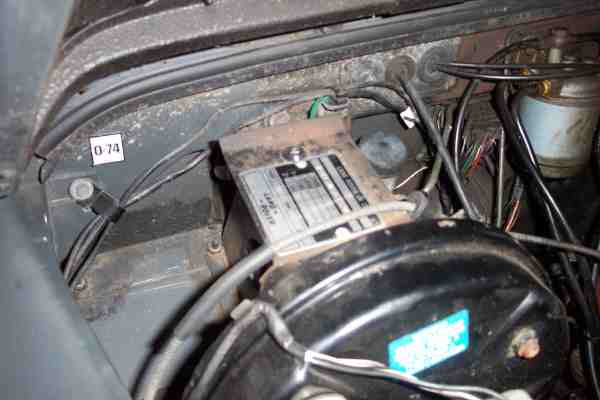Land Rover Chassis Numbers
Land Rover, Range Rover chassis numbers - by Glencoyne Engineering Land Rover chassis numbers Older Land Rovers may have a chequered past. They could have been rebuilt several times and ended up with quite a different configuration to the one they started with. Not a problem in itself, but it can be interesting to discover how your vehicle began its life. More seriously, stolen Landies are sometimes given a new identity using the chassis plate from a scrapped vehicle. So if the chassis number doesn't correspond to the vehicle you are looking at, alarm bells should start to ring. The chassis number is usually found stamped on an aluminium plate which also gives a basic description of the vehicle. This will usually be mounted on the bulkhead - inside the cab on earlier vehicles, under the bonnet (sometimes attached to the bulkhead, sometimes to the brake servo) on later ones. The list below does not include Series One vehicles - these are very much a collector's item nowadays, and I would recommend joining the Land Rover Series One Club if you are serious about purchasing one of these historic machines. From the end of 1979 Land Rover went over to the modern 17 digit VIN numbers - these are slightly harder to decode, but still no problem with the list below. Prior to this, 9 digit numbers, or 8 digits plus a suffix letter, were used.
How to read your VIN number to Identify your Land Rover, provided by Atlantic British - the largest distributor of Land Rover parts and accessories in North.
Land-Rover CHassis Numbers Land-Rover 80' Basic Changes Michael Bishop: Here are listed a few of the many changes that occurred on the Basic model 80' Land-Rover produced from 1948 to 1953. In the tables below, the left-hand column shows the chassis number(s) of the Land Rovers to which the changed parts were fitted. The right hand column explains how the new parts differed from the old parts. Many more parts changed than are listed. Newly found part differences are being researched.
1948 model Land Rover changes 860150 The seat back rests are changed from the pre production type which sit above the galvanised capping, part No. 301050, to being the sprung shovel back type which are part No. The seat backs changed again on the 1950 model at chassis No. 860180 The cover plate for the brake pedal adjuster on the R.H floor, part No.
300882 is no longer fitted. The floors changed again on the 1948 model at chassis No.
860181 The cover plates for the wing valances are now fitted. S 301208 & 301209 for LH & RH valences on RHD vehicles & part No. 301207 on LHD vehicles. The inner wings changed to make exhaust fitment easier to the vehicle in production and service. The front inner wings change again at 1948 chassis No. 860525 The front road springs changed from having a 2.5'free camber to having a 3.5' free camber. The front road springs changed again on the 1948 model at chassis No.
860648 The twelve shackle pins on vehicles numbered 860001 to 860647 were all part No. The inner spring mounting points are no longer tapped hence from chassis No. 860648 eight pins were part No. 210699 the other four are part No. 230721 which have less thread and are a tight push fit in the chassis. The front shackle pins changed again on the 1950 model at chassis No.

See also 1949 chassis No. 860730 The windscreen now has two small tapped blocks added to each top corner so that the optional trafficators can be fitted. A spot for the trafficator operating switch is now welded on the inside of the windscreen frame. Freehand 10 free download mac. The windscreen changed again on the 1948 model at chassis No. The exterior rear vision mirror is moved down from a bolt that was welded towards the top of the windscreen frame, to being bolted to a triangular piece which is now part of the windscreen frame and beside the door top hinge.